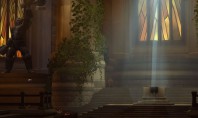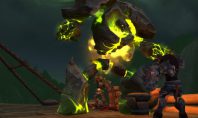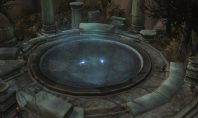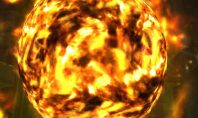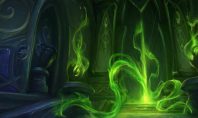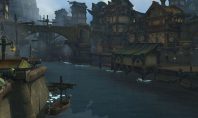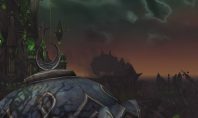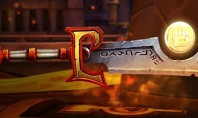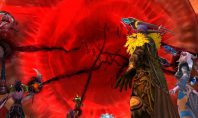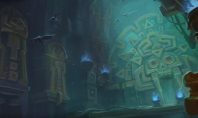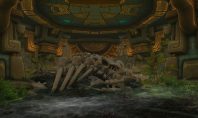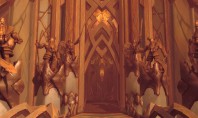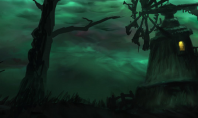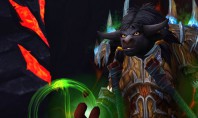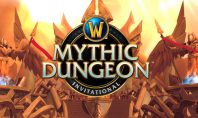Patch 7.2: Ion Hazzikostas über die Probleme mit der Artefaktmacht
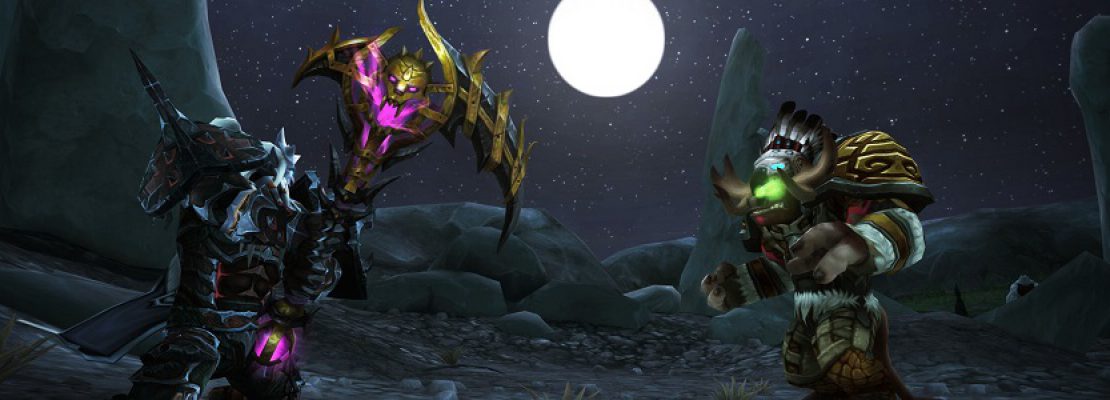
Auch wenn die mit Legion eingeführte Artefaktmacht von der Community von World of Warcraft eigentlich sehr positiv aufgenommen wurde und eine sinnvolle Bereicherung für diesen Titel darstellt, so kristallisierten sich im Laufe der Zeit aber dennoch einige störende Probleme mit diesem Feature heraus, die in den vergangenen Wochen bereits häufiger zu Diskussionen in den Battle.Net Foren führten.
Aus diesem Grund hat sich der für World of Warcraft verantwortliche Game Director Ion Hazzikostas in der vergangenen Nacht nun wieder einmal in den Battle.Net Foren zu Wort gemeldet und dort dann einen längeren und sehr informativen Bluepost darüber veröffentlicht, welche Probleme es aktuell eigentlich mit der Artefaktmacht gibt, welche Fehler das Entwicklerteam bisher in diesem Bereich machte und auf welche Weise sie diese Störfaktoren mit dem kommenden Patch 7.2 beheben möchten. Dabei konzentrierte sich der Mitarbeiter von Blizzard Entertainment in seinem Beitrag dann erst einmal auf die zwei seiner Meinung nach größten Probleme mit diesem Feature und erklärte ganz genau, welche Verbesserungen für diese Situationen geplant sind.
Wer der englischen Sprache nicht mächtig ist oder einfach nur keine Lust hat den gesamten Text von Game Director Ion Hazzikostas durchzulesen, der kann auch einfach nur einen Blick auf die zwei folgenden Zusammenfassungen der in diesem Beitrag genannten Probleme mit der Artefaktmacht werfen.
Problem 1:
- Fehler: Das Skillen der 20 letzten Ränge der Artefaktwaffen ist aufgrund der festen Kosten ein wenig zu einfach, weshalb es aktuell einen großen Unterschied zwischen der Spielstärke von Spielern mit viel Zeit zum Farmen von Artefaktmacht und den Spielern mit wenig Zeit zum Einsammeln dieser Ressource gibt. Dabei können diese 20 Ränge bei einigen Spielern einen Unterschied von insgesamt 10% Gesundheit und 10% verursachter Schaden ausmachen, was sich in vielen Schlachtzügen negativ auf die Stimmung und die Spielerfahrung der teilnehmenden Personen auswirkt.
- Lösung: Um diesen Abstand in Patch 7.2 ein wenig zu verringern, werden die Entwickler die Kosten der Artefakteigenschaften nach dem Erscheinen dieses Updates dann exponentiell mit der vergangenen Zeit skalieren lassen. Zusätzlich dazu möchten sie das System mit dem Artefaktwissen noch weiter ausbauen, sodass hinterherhinken Spieler die ihnen fehlende Artefaktmacht wesentlich schneller aufholen können. Das Ziel der Mitarbeiter von Blizzard Entertainment ist es, dass Helden mit der doppelten Menge von Artefaktmacht als man selbst nur um ungefähr 1.5% stärker als der eigene Charakter sind. Bei der vierfachen Menge von Artefaktmacht sollte dieser Unterschied nur noch maximal 4% betragen.
Problem 2:
- Fehler: Beinahe dauerhaft besuchbarer Content wie beispielsweise der Schlund der Seelen bietet den Spielern wesentlich mehr Artefaktmacht als die nur begrenzt verfügbaren Schlachtzüge von Legion.
- Lösung: Die Entwickler werden mit Patch 7.2 mehrere Anpassungen an der durch Mythic+ Dungeons erhältlichen Artefaktmacht durchführen. Aus diesem Grund beinhaltet die wöchentlichen Beuteruhen auf dem PTR nun auch jede Woche eine Marke mit Artefaktmacht und das regelmäßige Wiederholen der gleichen Instanz verringert die in diesem Dungeon vorhandene Menge an Artefaktmacht. Zusätzlich dazu wurde bereits vor Kurzem ein Hotfix auf die Liveserver aufgespielt, der die in der Nachtfestung erhältliche Anzahl an Artefaktmacht-Marken deutlich erhöhte.
Artifact Power and Patch 7.2
Artifact Power has been a hot topic lately, both around the community and within the development team. With Patch 7.2 on the horizon, introducing both new artifact traits and additional Knowledge levels, we have been reflecting on the way the system has unfolded during the first months of Legion, and evaluating changes based on the lessons we have learned thus far.
First off, a look back at where we started.
From the outset, Artifact Power was intended to serve two intertwined purposes: First, it offered max-level progression that was not entirely item-driven, along with choices and elements of character customization as players traversed their trait trees; second, it was meant to serve as a universally desired, consistent reward from all types of content.
In crafting the systems that delivered Artifact Power, we weighed the merits of hard caps versus a smoother system of diminishing returns. We had extensive experience with hard caps, through multiple past iterations of currencies like Valor Points and Conquest Points, and wanted to avoid several of the downsides of that approach. For example, a cap inherently feels like more of an expected quota, where missing a week or falling short of the cap puts you clearly, and potentially permanently, behind the curve.
Instead, as everyone knows, we settled on an open-ended system of diminishing returns. Without any hard caps on how quickly players could earn AP, it was essential to have some sort of limiting mechanism on the gap in power between players of different playstyles, and different levels of time investment. We accepted the admittedly complex design of Artifact Knowledge because it solved this problem, effectively reining in the size of this power gap. Players trying to progress past the expected artifact level for their Knowledge would run into those rapidly diminishing returns, while those who played less than that would have Knowledge as an accelerator to help them catch up to the cutting edge. When Emerald Nightmare was new content, while the average raider was at 20 or 21 points, the most dedicated might have been at 24 or 25 – a relatively modest gap.
Now, where things went wrong…
We feel that we made two major missteps with the Artifact Power system that increasingly manifested themselves as we got deeper into Patch 7.1 and 7.1.5. And both of them served to undermine that core goal of ensuring that the gap between players with different levels of time invested into the system could not grow too large.
First, the cost of ranks in the 20-point final trait remained relatively flat, as opposed to the rapid exponential scaling up to that point. This meant that someone who spent twice as much time gathering AP as I did would have roughly twice as many ranks as me. Instead of the 24 vs. 21 gaps we saw in Nightmare, a number of hardcore raiders entered Nighthold with 54 points, while others were just beginning that final progression and found themselves with nearly 10% less health and damage, equivalent to being almost a full tier of gear behind. Players who switched specs or characters along the way found themselves in a similar position. The power gap was larger than ever before, which created a sense of obligation and a number of negative social pressures that the system had previously tried to minimize. In short: We’re not at all happy with how this worked out.
A common suggestion is to simply reduce the amount of Artifact Power required to fully unlock the artifact in 7.2. This would not solve the underlying problem, but would rather reduce its duration while heightening its intensity, as competitive players sprinted to finish their Artifacts in order to be “ready.” But then we would inevitably tune around that completed power level, and other players would simply be playing catch-up the entire time. And in the long run, Artifact Power would not be serving its intended purpose of ongoing parallel progression. A capped-artifact player who goes a week without getting any item upgrades ends the week literally no stronger than before. Part of the value of the artifact, both for personal progression and guild progression, lies in ensuring that everyone is at least a bit stronger next week than they are right now, and a bit closer to overcoming whatever obstacle stands in their path. Our goal is for Artifact Power to always be of some interest as a reward, whether from a World Quest, or as a consolation prize when failing a bonus roll.
Instead, we are focusing on fixing the mistake of flat cost scaling at the end of the progression, and instead keeping the increases exponential throughout, while also strengthening Artifact Knowledge as a core pacing and catch-up mechanism. These changes should be visible in an upcoming PTR build.
This is done with the primary goal of reducing the power gap based on time investment, while preserving Artifact Power as an endgame reward that everyone values. If the leaders in Artifact Power were only a few points ahead of a more typical player, rather than crossing the finish line when most were just leaving the starting blocks, players with less time to commit would not be as disadvantaged in competitive activities. If a Warlock were choosing between having 48 points in a single spec or 44 points in all three specs if they’d split their efforts evenly, the barrier to playing multiple specs would be significantly reduced. We are still tuning the curve for 7.2 trait costs, but we’re currently targeting scaling such that someone who earns twice as much AP as me will have an artifact that’s only ~1.5% stronger; someone who earns four times as much AP as me should only be 3% stronger. On the whole, this should be a massive reduction in the power gaps we see in the live game today.
The second problem with our initial implementation was that repeatable sources of Artifact Power (Mythic Keystone dungeons in particular) dominated time-limited sources such as Emissary caches and raid bosses. The fact that a large portion of the community evaluates their Artifact Power needs using “Maw runs” as the unit of measurement is ample evidence of this failure. We very recently deployed a hotfix to increase AP earned from Nighthold in order to make raiding, with a weekly-lockout, better compare in efficiency to repeated Mythic Keystone runs. And in 7.2, we’re more thoroughly addressing this issue by adding a significant amount of AP to the weekly Mythic Keystone cache, while somewhat reducing (and normalizing based on instance length) the AP awarded by repeated runs. These changes are being made to narrow the gap in AP earning, and thus power, based on time investment.
All of the above changes are aimed at allowing players the freedom and flexibility to decide how they want to spend their time, and which goals they wish to pursue, while limiting the difference in power between players who arrive at different answers to those questions.


